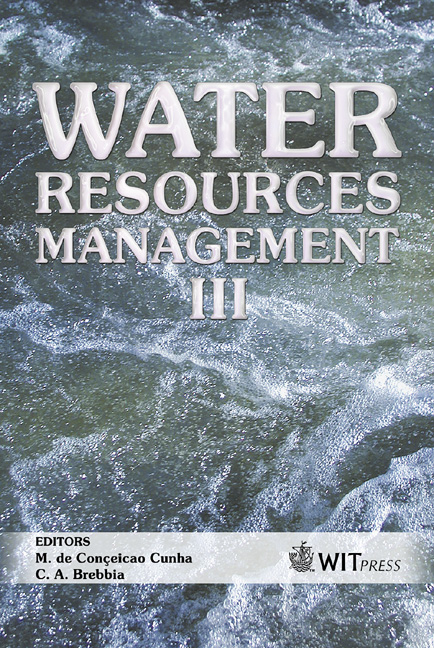Water Conservation In Sandy Calcareous Soils Amended With Clay Deposits
Price
Free (open access)
Transaction
Volume
80
Pages
7
Published
2005
Size
299 kb
Paper DOI
10.2495/WRM050521
Copyright
WIT Press
Author(s)
A. M. Al-Omran, A. S. Sheta, A. M. Falatah & A. R. Al-Harbi
Abstract
The purpose of this study was to investigate the effect of irrigation (levels and methods) and types of clay deposits on squash fruit yield, water use efficiency (WUE) and the distributions of soil moisture, salts and roots in the root zone of sandy calcareous soils. Field experiments were conducted at the college experimental station in the 2002 and 2003 seasons. They consist of three clay deposits, three rates (0, 1.0, and 2.0%), four irrigation levels (60, 80, 100, and 120 % of ETo) using surface and subsurface drip irrigation. Results indicated that squash fruit yield was significantly increased with an increase in irrigation level, whereas WUE significantly increased then decreased at the highest irrigation level. The average yield increased by 12.6% at the high irrigation level compared to the moderate irrigation level, and decreased by 40.7% at the low irrigation level. WUE increased by 7.53% at the high irrigation level and decreased by 33.1% at the low irrigation level. Types of clay deposits significantly affected fruit yields compared with the control. The yield increase was 12.8, 8.35 and 6.4% for Khulays, Dhruma and Rawdat clay deposits, respectively. The differences between surface and subsurface drip on fruit yields and WUE were also significant. Results indicated that the moisture content of the subsurface treated layer increased dramatically, while salts were accumulated at the surface and away from the emitters in subsurface drip irrigation. The advantages of subsurface drip irrigation were related to the relative decrease in salt accumulation in the root zone area where the plant roots were active and water content was relatively high.
Keywords





